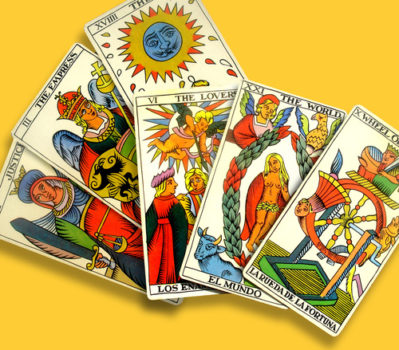Industry Thought Leaders Share Predictions for 2016
by Rebecca Muir on 4th Jan 2016 in News

The online advertising industry evolves at a rapid pace, driven by changes in consumer behaviour and advancements in technology. ExchangeWire spoke to several senior marketing professionals from leading ad tech companies about their expectations for 2016, we’ve summarised their prediction in this piece.
Technology will support increased control and transparency
“Issues, such as viewability and fraud, have led marketers to demand more control over the execution of their programmatic campaigns, meaning transparency will be a major trend in 2016. The IAB have already scheduled an industry event to debate programmatic transparency. Technology will be required to support this increased level of control, and marketing operating systems that enable marketers to manage activities across all channels – including offline – using a single platform will help them achieve the transparency they desire.”
Richard Beattie, SVP Commercial, at MediaMath
“As we approach the new year, we’re going to see advertisers become much more vocal when it comes to negotiations on acceptable levels of fraud. While it appears that some feel comfortable aiming for the level of fraudulent impressions around 20%, we are confident that advertiser demands will see this lower to nearer 5% next year. With the promise of clearer and consistent standards, 2016 will welcome stricter thresholds in response to the increased prevalence of the digital ad fraud epidemic."
Julia Smith, International Consultant at Forensiq

TV becomes more measureable
While digital advertising investments have continued to grow over the last decade, TV still reigns king for many brands. As media consumption has become more addressable, marketers are increasingly looking for data that helps them understand viewer behaviour and the effectiveness of their TV advertising investments. Advanced TV attribution methodologies will make this possible by collecting granular TV impression data and enabling marketers to measure TV’s impact on digital responses for each attribute of TV advertising, such as network, telecast, daypart, and more. As a result, marketers will not only be able to measure and optimise their TV buys at a more granular level, but also on a much faster cadence than allowed by traditional, survey based measurement methods.
Ben Sidebottom, Director of Solution Architecture, Visual IQ (pictured right)
Automated creative
“The advent of programmatic has revolutionised the distribution of digital advertising — for the first time, brands can instantly target the right audience, in the right location, at the right time. However, while programmatic distribution has moved mountains for advertisers in one sense, ad creative has yet to evolve to achieve maximum impact on every device and screen.
As a result, many advertisers are reaching their target audience with content that isn’t optimised correctly for the device or channel, culminating in a less effective consumer experience. In 2016, dynamic creative production will come into play in a big way to complement programmatic distribution. By automating the production process, advertisers can ensure their content maximises its full potential across all devices, each and every time.”
Omi Ducat, VP Business & Client Development, wayve
Ad blockers to boost ad propositions
“As part of the battle against ad blockers, publishers will take greater control of the overall ‘ad experience’ they present to their users. Greater efforts will be made to ensure ads and formats provide an interesting UX that will genuinely engage users, rather than irritate them. We can expect to see advertising become more creative, tasteful, and (subtly) relevant as a result. Fewer ads will be served per page; and, over time, this should lead to an inflation of CPM rates. We will also see greater numbers of publishers prompting their users to disable ad blocking in in order access free content.
"Publishers and SSPs have shown growing interest in gathering a more exciting collection of formats available to trade programmatically. Think high-impact and higher-value! Enabling new formats across the ‘tangled web’ of the programmatic ecosystem can be pretty complicated, as involvement is needed from so many parties to test formats and potentially adapt their platforms. But this challenge will be overcome in 2016 and this will allow formats to finally evolve. Premium Publishers in particular will take advantage of this, with the bulk of premium formats traded via PMPs or on a 'programmatic guaranteed' basis.
"Publishers have been clamouring to work with Snapchat Discover recently – if you’re not familiar with Discover, it’s a feature that presents Snapchat Stories that are curated by Snapchat’s media partners. When producing content and advertising for Discover, publishers need to create highly visual stories with short attention spans in mind. As a result, short full-page videos and animations – designed to be viewed vertically, as most mobile content is consumed this way – are dominating the space. Snapchat’s publishers say these short vertical videos show completion rates that are up to nine times higher than ‘standard’ horizontal videos; and, not surprisingly, publishers have started to take what they’ve learned from this environment to apply to their own content and advertising. Jon Steinberg, Daily Mail’s North American CEO, stated that Daily plans to ‘aggressively’ develop vertical video content. This trend will continue and grow in 2016 (and beyond), leading to significant changes in the presentation of mobile content and advertising.”
Lolly Mason, Head of Media Partnerships EMEA, Celtra.
Video next big thing for programmatic
“Video is undeniably the next big thing in programmatic. However, to avoid the risk of user intrusion, advertisers and publishers will need to explore intelligent ad formats that add to the reader’s experience rather than hinder it. User-initiated videos will become mainstream, boasting enhanced performance metrics that provide advertisers with genuine insights into actual views and time spent on ads.
"The line between editorial content and advertising will continue to blur as publishers embrace video as a form of luxury storytelling, working in partnership with their clients to produce engaging, relevant, and dynamic content.
"We will see a rise in companies launching their own video ad exchanges, following in the wake of Google – which invested heavily in their programmatic video offering on mobile devices in 2015 – and Channel 4, which launched its own video ad exchange in November 2015."
Lisa Menaldo, Managing Director UK, Sublime Skinz (pictured right)
“TV may still have a larger share of the global advertising market, but the transfer of ad dollars from TV to digital video has been slowed by one major factor: reach. That’s because looking at video platforms as siloed competitors pitted against one another does not allow the heralded reach of TV.
"To allow digital video advertising to deliver on its full potential – reach, intent-driven viewing, engagement, and targeting – marketers must consider the major platforms, such as YouTube, Facebook, and Instagram, in unison. Cross-platform video campaigns that leverage the unique strengths of each platform, and consider the implications that each has on the entire buying cycle, will be the Achilles heel of TV and the future of advertising.”
Chris Bennett, EMEA MD, Pixability
 “Video advertising is leading the way in premium, respectful ad formats, with publishers embracing native formats that are seamlessly woven into the heart of editorial content. Frequently, we see the need for engaging ‘native moments’, telling a story across all devices throughout the entire journey of the consumer’s day-to-day life. Advertisers and publishers alike will continue the fight for users, by ensuring their video ads fit visually within premium content; the world of advertising is about to make it’s debut in the eyes of the consumer.
“Video advertising is leading the way in premium, respectful ad formats, with publishers embracing native formats that are seamlessly woven into the heart of editorial content. Frequently, we see the need for engaging ‘native moments’, telling a story across all devices throughout the entire journey of the consumer’s day-to-day life. Advertisers and publishers alike will continue the fight for users, by ensuring their video ads fit visually within premium content; the world of advertising is about to make it’s debut in the eyes of the consumer.
"For years we have been talking about how we can use data to pin-point target consumers; however, little has been done to show how data can help brands deliver more relevant and impactful creative. I believe that data will herald a renaissance in the digital creative industry – leading to the best creative messaging and formats we have ever seen.
"The managers of large media groups we meet tell me that 15 to 35% of their audience block advertising, depriving them of considerable revenue. In fact, the number of ad blocker users has exploded of late, with one-in-five UK adults implementing one. It’s no wonder that the term 'ad blocker' made the shortlist of Oxford Dictionaries Word of the Year.
"But this reported usage should be seen as an opportunity, not a scare – this rapid adoption will in fact be the ad blocker's demise, encouraging advertising to become much more relevant to the user, with sustainable formats that put the power back in the hands of the consumer.
"Finally, next year will bring unprecedented focus on mobile. The smartphone is now our go-to device in the UK, the first thing we pick up in the morning and the last thing we look at before going to sleep. Marketers will need to ensure their campaigns are truly cross-screen, thinking mobile-first when approaching their business strategies. And, of course, we’ll also see increased spend going into buying programmatically on mobile, as premium and quality formats become more readily available in this way."
Justin Taylor, UK MD at Teads (pictured above right)
“The coming year will bring an increase in spend on native formats, outside of owned and operated properties, thanks to innovations in creative and publishers innovating on inventory discovery. The investment in these new formats will be centered on native video, allowing text-based publishers to tap into fast growing video advertising budgets.
Viewability became a hot topic in 2015 for desktop video advertising. We should expect to have profound impacts on mobile video advertising, changing the way advertisers allocate spend and price to actual user engagement. Mobile video has strong potential to drive engagement beyond the actual view, like app installs, and convert users down the funnel.
With virtual and augmented reality becoming more popular we’ll start to see the effects trickle into the mobile advertising industry. We’ll begin to see the core infrastructure in terms of content creation, reach and tracking, personalisation and performance develop. This will be powerful given the immersive nature of both of these formats, which will have a huge impact on mobile advertising landscape.”
Janis Zech, Founder/COO Fyber
Vertical Trading Desks
“One digital marketing trend we’re going to hear quite a bit about in 2016 is something I like to call the ‘retail trading desk’. What I mean by that is essentially retailers becoming agencies. Retail brands have long been delving into the world of publishing by creating custom content for their sites around recipes or seasonal allergy guides. The next logical step is to become retail trading desks too. The point of sale and customer relationship management (CRM) data supermarket chains are constantly gathering is richer than anything any media agency or brand has access to. This data runs both offline and online and brands desperate to better understand their customers would jump at the opportunity to access it.
"One example of this could be a leading supermarket chain approaching Unilever or P&G and offering to run campaigns on their behalf that leverage the retailer’s data, in exchange for a certain amount of media spend. Some global retailers have already been experimenting with this approach, notably Amazon and Walmart, as well as others such as Coles in Australia, but 2016 will be the year the global retail sector really wakes up to the potential of the retail trading desk.”
Jay Stevens, GM International, Rubicon Project
Consolidation and collaboration
“Interoperability will be the new buzzword. The coming year will see major strides in the aggregation of data from disparate sources into a single view that can be used to drive holistic marketing strategies. Marketers will continue to adopt data management platforms (DMPs) and increase their focus on unifying marketing and advertising data and messaging, resulting in the eventual merger of ad tech and martech. Increased consolidation within the industry won’t necessarily just mean the digital giants buying up point solutions to create their own stacks. It will also mean increased collaboration and validated technological partnerships between mid-sized companies looking to make sure their individual solutions can work interoperably towards common marketing goals."
Ben Walmsley, Regional VP Northern Europe, Sizmek
Evaluating the value and quality of data
“The battle between first-, second-, and third-party data will continue to proliferate, and it will no longer be enough for advertisers to employ a data management platform (DMP). The value of third-party data will be further scrutinised as marketers ask, how valuable is data that just about anyone can purchase? And, with the rise of walled gardens, will second-party data become fragmented? To allow advertisers the best opportunity to engage with consumers, first-party data must still rule. Only by empowering a DMP – by supplementing it with user profile modelling intelligence to identify a consumer’s interest and propensity to purchase – will advertisers be able to successfully target consumers with relevant interests and a real intention to evaluate the offer.”
Giovanni Strocchi, CEO, ADmantX
The direction of viewability
“We’re currently in a situation where the line in the sand for viewability is 50% of an ad in view for at least one consecutive second. Rightly or wrongly, as the official IAB standard, it's becoming a benchmark for trading.
"However, with disagreement about the appropriateness of the standard, and significant measurement discrepancies between vendors, 2016 will see a greater focus on two key areas: 1) alignment of viewability measurement methodologies, and 2) moving the discussion from whether something is considered viewable to how long and how much of it needs to be in view to have an impact. 2016 will see the 'standards' discussion mature and viewability become embedded as a core metric for all digital campaigns.
"The following are the five key things that need to happen in 2016 for viewability to become more than a stepping stone on the path to engagement, and a metric robust enough to trade against:
- Industry bodies providing more transparency on how they reached the standards, and driving these standards forward.
- The willingness to aggregate different metrics to give a richer idea of 'viewability' – crucial in moving towards the idea of engagement and more focus on measuring ad impact.
- Promoting integration intelligence (so campaigns are tagged consistently and accurately).
- Communication of ad validation components in the hierarchy of client KPIs.
- An open-source solution to create a universally accepted implementation approach.
InSkin Media’s Chief Commercial Officer, Steve Doyle
Moment marketing
“The ad-blocking debate dominated 2015 and focused attention on the need for more contextualised and relevant ads to avoid turning off weary consumers. One way we expect brands and agencies to make sure their digital campaigns hit home next year is via an increased focus on moment marketing.
"Put simply, moment marketing is the ability to instantly connect your digital marketing to what’s going on in the offline world. Campaigns can be synced to a wide range of events that are likely to impact consumer behaviour, for example a change in the weather, the score of a football match or the screening of a major TV ad campaign. It's about ensuring your message connects at the exact moments when consumers reach for their smartphone to react on social media or search for more information.
"Over the next 18 months, marketing strategies will also become more aggressive with TV ‘ad-jacking’. This is where marketers counter-attack on social media when a competitor brand’s ad is being aired on TV. This tactic allows a brand that might not be able to afford the enormous investment required for TV to join in the conversations and buzz generated by a competitor’s campaign.
"In 2016, brands are not short of opportunities to amplify their marketing around global events like the UEFA European Championships, the Olympic Games, and the Oscars using moment marketing. But it’s not just about the big occasions. Everyday changes in the weather are also high on the list of moments that brands want to use to trigger digital campaigns. It’s easy to see why this matters. For example, Sainsbury’s found that just a few degrees rise in temperatures in early spring will produce a 200% lift in BBQ sales. Other triggers we expect brands to utilise in 2016 include a change in pollution levels.’’
Antoine de Kermel, MD EMEA of TVTY
Ad BlockingAd FraudCreativeDisplayIndustry InfrastructureMartechMedia SpendProgrammaticTargetingVideoViewability








Follow ExchangeWire